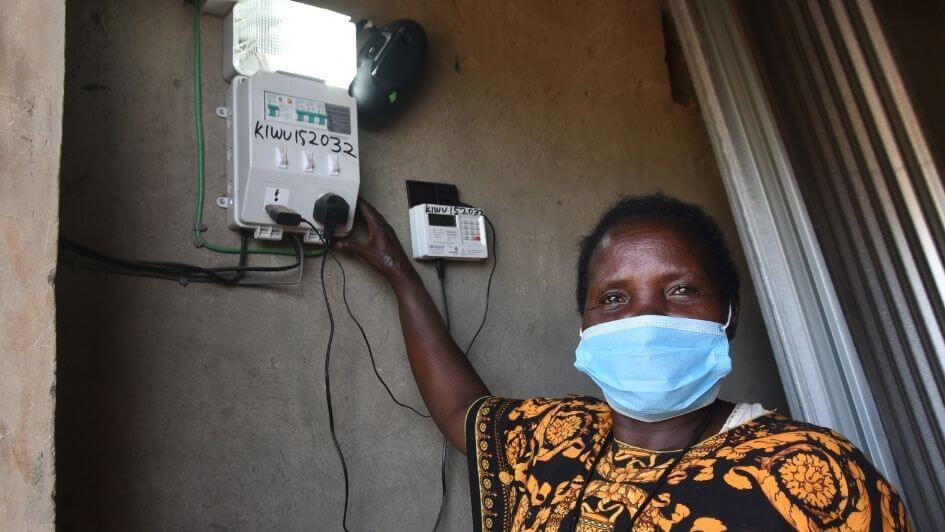At the start of the decade, one thing became clear; the COVID 19 pandemic had reversed the gains made towards achieving the Sustainable Development Goal 7 that UN member countries set to ensure access to affordable, reliable, sustainable, and modern energy for all. The lockdowns imposed by national governments and the resultant economic slowdown and downturn meant that more people had to stay indoors exerting pressure on household energy resources while many lost their jobs, making energy less affordable for them. The damaging effects of the COVID crisis are lasting longer in many parts of the developing world: the economic slump is deeper and, with little to no access to credit, the fiscal capacity to drive a sustainable recovery is much more limited.
In the Global South the challenges are most pronounced in sub-Saharan Africa, where grid inefficiencies affect billions of people on a daily basis. Transmission and distribution losses in low energy access countries are estimated to be five to 10 times higher than in developed ones (IRENA 2016). Reliance on the centralized utility model to deliver energy to rural and peri-urban areas has left nearly 1 billion people without access to energy.
With nine years left to achieve universal energy access for all by 2030, national governments can no longer afford a business-as-usual approach to end energy poverty. Public utility companies and private sector energy firms must work together to harness the opportunity to create smarter grids, increase energy consumption and accelerate access, while cutting state losses and better serving consumers.
In Uganda, only 41% of the current population has energy access; 24% per a grid connection and the rest by decentralized technologies (World Bank 2019) (MIT 2020). With an average of 4.5 people per household, it will take over 10 million connections for Uganda to achieve universal access (Ministry of Energy and Mineral Development 2020). Reliance on grid connections alone is not sufficient to deliver energy access for all by 2030, according to Utilities 2.0: Integrated Energy for Optimal Impact report.
Since 2018, a number of organizations led by Uganda’s largest power utility, Umeme, Ltd., Power for All, The Rockefeller Foundation, Makerere University, CLASP, East African Power, EnerGrow, Equatorial Power, Fenix International, Rocky Mountain Institute, Zola Electric/NXTGrid and University of Massachusetts, Amherst (UMass)—have been working in cooperation with several local Ugandan and East African businesses in what is envisioned to be the utility of the future; to test the benefits of integrating centralized and decentralized energy (including solar home systems, mini-grids, grid, and smart grid technology) and integrated public-private energy planning.
Under the Utilities 2.0 program, this consortium is piloting an integrated energy project, aptly named Twaake (meaning ‘let us light’ in Luganda) that is testing new ways to:
-
Accelerate energy access, through faster and lower-cost electrification, and advance productive use of energy.
-
Drive demand stimulation for all energy companies’ bottom lines and customers’ benefit.
-
Utilize smart grid/DRE tech (including decentralized renewables, storage, advanced measurement and analytics) to improve grid reliability, stability and reduce grid losses.
Speaking at the official commissioning of Twaake, Selestino Bubungi, Umeme Managing Director and CEO said, “Uganda is now facing a challenge of access to clean energy with about half of the population having access. Twaake is coming in to bridge the gap of delivering clean energy to the households. This partnership will ensure that we deliver clean energy to the population in this pilot phase, pick lessons and use it to scale up. The partnership will assist to drive Uganda’s electricity agenda.”
Partnership in practice
In Kiwumu, an off-grid project site, Equatorial Power developed a 40kwh mini-grid that powers 300 households and 60 businesses. The company is also in charge of customer recruitment and servicing. The utility company, Umeme Ltd, built the distribution network and provided smart meters and a back-end system that allows customers to purchase electricity (as well as access to meter data). Asset financing is being provided by Energrow to stimulate demand and encourage productive use of energy. Finally, East African Power built a containerized milling and drying unit to service the agriculture community and has partnered with a local miller that will operate and manage the containerized milling and drying equipment.
In Nyenje, one of the on-grid sites, Energrow provides productive use assets to both businesses and households, targeting 50% of the businesses with asset financing for demand stimulation. Umeme supports EnerGrow where possible to identify potential customers by providing them with consumption data and through co-branding (to support and endorse the productive use project).
Lessons learned to date.
Integrated energy through public private partnerships will bring faster connections, increase productive use of electricity, improve grid reliability and stability, reduce grid losses, promote economic growth in rural communities, and improve business profitability.
By combining the advantages of traditional utilities like Umeme (infrastructure, transmission lines and poles, access long-term low-cost financing, existing customer billing and collections systems) and decentralized renewables (lower cost connections, fast implementation, fewer regulatory challenges), with targeted interventions to drive demand (financing, training, bundled services etc.).
Ultimately these types of partnerships, once scaled, will help achieve SDG 7, ensuring access to affordable, reliable, sustainable, and modern energy for all. For this to happen, national governments must provide equitable incentives to grid, mini-grid, and household-level solutions alike to reward faster connections and the dividends associated with access to modern energy services. Additionally, clear and consistently applied regulations can send a clear market signal to new developers and sources of capital.
